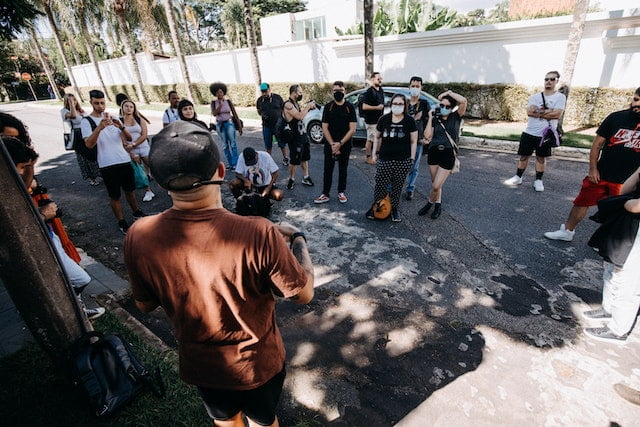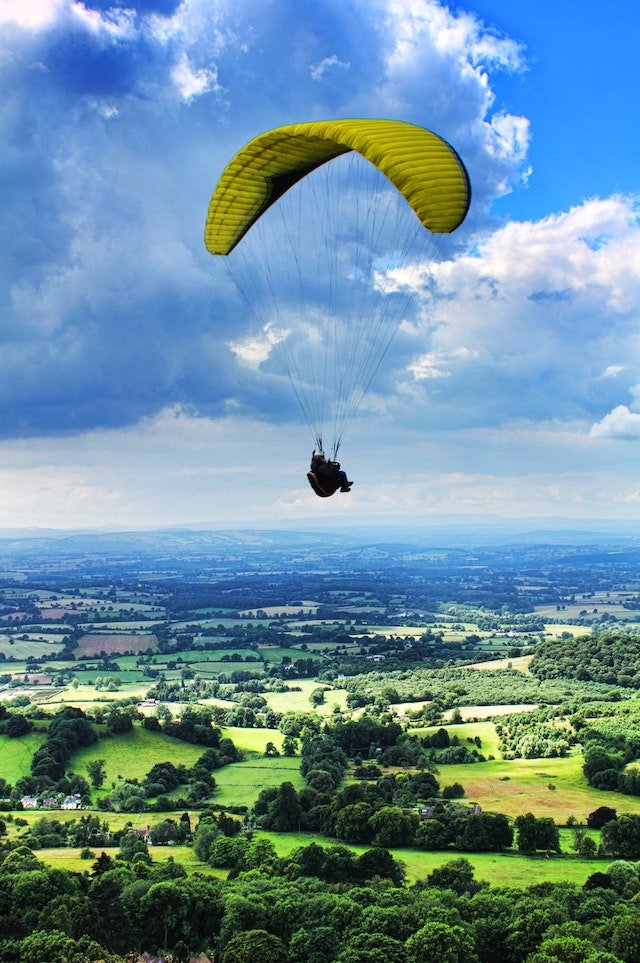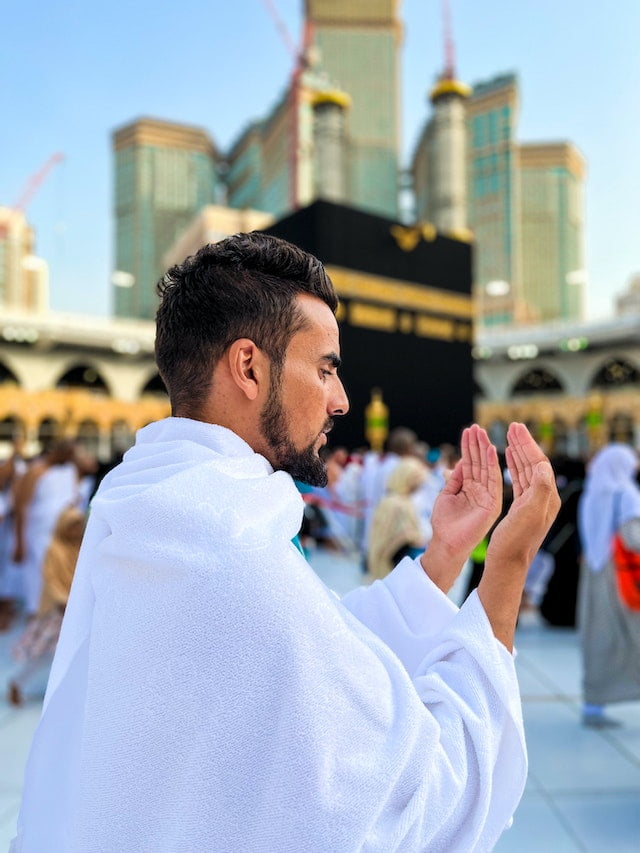The world is full of diverse and exciting destinations that attract travelers. Several types of tourists have unique interests and preferences when exploring new places, from adventure seekers to culture enthusiasts.
Are you a beach bum who loves relaxing under the sun or an adrenaline junkie who is always looking for thrilling experiences? Or are you a history buff fascinated by ancient ruins and museums?
Whatever your travel style, understanding the different types of tourists can help you plan your next trip more effectively.
In this article, we’ll take a closer look at the various types of tourists and help you identify which one you are. So, get ready with your bags and join us on this exciting journey of self-discovery and exploration!
Are you going somewhere soon? Check affordable flights below.
Types of Tourists According to Erik Cohen’s Tourist Typology
Cohen’s tourist typology is a significant typology that emerged in the travel and tourism domain. Cohen proposed four distinct categories for tourist classification.
The Drifter

Drifters are a unique type of tourist who prefers to immerse themselves in the local community. They avoid hotels and stay with locals for an authentic experience.
Drifters crave adventure and prefer to create their itineraries. They shun familiar experiences and continually seek out new and unique opportunities. Drifters are interested in something other than mass tourism and avoid popular chain restaurants and stores.
The Explorer
Tourists who identify as Explorers seek new experiences rather than relying on what they know. These individuals may engage more with the tourism industry’s offerings, such as staying in hotels or trying local cuisine and shopping.
While they may prefer to travel independently and immerse themselves in different cultures, explorers still appreciate the hotel bed’s comfort at night. Explorers typically enjoy local fare but might indulge in fast food occasionally.
Save on Travel with Trip.com (ENG)
The Individual Mass Tourist
The Individual Mass Tourist prefers the familiar over the new. They have a preference for regular food, language, and accommodation. However, they are not limited to group tours and activities.
Individual Mass Tourists may seek the assistance of a travel agency or a local guide, but they usually prefer traveling alone rather than in groups.
Types of Tourists: The Organized Mass Tourist

The Organized Mass Tourist prefers familiarity over novelty and usually travels in groups with a tour guide. They tend to follow a set itinerary and stick to their plan.
Types of Tourists According to Stanley Plog
Stanley Plog, a tourism expert, developed a model of Allocentricity and Psychocentricity to classify tourists based on their preferences. He identified three types of tourists and connected their behavior to the popularity of a travel destination.
Allocentric Tourist
According to Plog’s travel theory, tourists with an allocentric mindset tend to prefer visiting less developed or unexplored destinations. These individuals are often adventurous and enjoy the thrill of exploring unknown places. They may even be the first ones to see a newly discovered location.
Allocentric tourists are comfortable traveling solo and not afraid of the lack of information or guidebooks on their chosen destination. They are often excited by the idea of discovering a hidden gem that others have yet to explore.
Psychocentric Tourist

Psychocentric tourists are those who prefer to visit areas that are well-established and have been popular with tourists for some time. Their desire for comfort and familiarity characterizes them, and they are often part of organized tour groups arranged by their travel agent.
Psychocentric tourists prefer low-intensity activities and enjoy holiday resorts that offer all-inclusive packages. They are typically repeat visitors to the same destination and tend to stay within the confines of their hotel or resort for most of their trip.
Types of Tourists: Mid-Centric Tourist
Mid-centric tourists are individuals who seek a balanced vacation experience. They enjoy some adventure but prefer having some of their home comforts available. They may plan their trip themselves through dynamic packaging yet still spend most of their time at their resort.
Alternatively, mid-centric tourists may choose to go on an organized package tour but take the initiative to explore the local surroundings independently.
Types of Tourists by Destination Type
Tourists are often categorized based on the type of destination they travel to. This classification generally includes four main groups.
Domestic Tourist
Domestic tourism refers to traveling within one’s own country for either leisure or business purposes. To be considered a domestic tourist, one must spend at least a day away from their usual residence within their home country, as per the UNWTO.
The USA, India, and China are popular domestic tourism destinations due to their large size and diverse range of tourist attractions.
Book your next unforgettable experience on Tripadvisor, with flexible bookings and free cancellations.
International Tourist
International tourism refers to traveling abroad for either business or leisure purposes. The tourism industry is the largest and most significant industry worldwide.
Many factors determine the destinations that tourists choose, including the distance to travel, the cost of living in both the tourist’s home and destination regions, the tourist’s cultural background, disposable income, and various other considerations.
Inbound Tourist
Inbound tourism refers to traveling to a foreign country for tourism. It is a crucial aspect of many countries’ economies worldwide.
The tourism industry is often seasonal and varies depending on weather conditions and school and public holidays. As a result, most destinations experience peak, shoulder, and low seasons.
Types of Tourists: Outbound Tourist

Outbound tourism refers to traveling outside one’s home country for tourism purposes. It is important to note that outbound tourism does not include purchasing goods or services within the tourism-generating country before or after the trip.
People often interchange outbound and inbound tourism since international travelers are both outbound and inbound.
Types of Tourists by Tourism Type
There are various ways in which people classify tourists based on their type of tourism. However, this can be quite complex considering the numerous types of tourism.
Sustainable Tourist

Sustainable tourism is a crucial aspect of the tourism industry, focusing on caring for the environment, society, and economy. This form of tourism, also known as responsible tourism, strives to reduce the adverse effects of tourism while maximizing positive outcomes.
Recently, more and more tourists are opting for sustainable tourism, a positive trend for the industry.
Ethical Tourist
Ethical tourism is a type of tourism that promotes the welfare of both the people and the environment associated with it. It shares common ground with sustainable and responsible tourism.
Many travelers seek ways to practice ethical tourism and integrate this into their travel choices and actions.
Experiential Tourist

Experiential tourism delves into experiential learning, which involves gaining knowledge and understanding through personal experiences. As a result, these tourists seek to fully engage with a destination, its culture, people, customs, and history.
This type of tourism is particularly favored by backpackers, students, and those seeking a genuine and profound travel experience.
Adventure Tourist

Adventure tourism is an incredibly thrilling form of tourism that entails a certain level of danger. It generally necessitates specialized abilities or physical exertion.
Rock climbing, skydiving, white water rafting, mountain climbing, zip-lining, and paragliding are just a few of the many activities that adventure tourists may engage in.
Dark Tourist

Black tourism, dark tourism, thanatourism, or grief tourism, involves traveling to places associated with death or tragedy. This type of tourism is controversial, with some considering it a respectful act while others view it as unethical.
Popular dark tourism destinations include Auschwitz, Chernobyl, and Ground Zero, while lesser-known ones may consist of cemeteries, zombie-themed events, or historical museums.
Cultural Tourism

Cultural tourism refers to visiting specific locations to explore and understand a particular culture. It may involve attending festivals, exploring museums, and indulging in local cuisine and beverages.
Sometimes, experiencing a new culture may be an unintentional aspect of a traveler’s holiday, where they immerse themselves in the local customs, language, and lifestyle.
Ecotourist

Ecotourism focuses on protecting vulnerable environments and ecosystems. You can find it in areas at risk of damage to preserve them.
To achieve this, involve constructing tourist facilities with minimal effect on the natural surroundings and using environmentally-friendly products like compost toilets and solar-powered electricity. This approach is closely linked to sustainable tourism and has recently gained popularity.
Medical Tourist

Medical tourism is a fast-growing trend, with more people traveling to other destinations for medical treatment. This kind of tourism is also known as health tourism. Medical tourists are motivated by reduced costs or better quality of medical treatment.
Medical tourists may seek life-saving treatments unavailable in their home country and cosmetic surgery or dental procedures, among other medical needs. Popular destinations for medical tourism include India, Turkey, and Panama.
Religious Tourist

Religious tourism, or faith tourism, refers to traveling for spiritual pilgrimage, missionary, or interest. A branch of cultural tourism, religious tourism constituted some of the earliest tourism forms.
Not all religious tourists conform to the beliefs or spiritual practices of the attractions/destinations they visit, which can cause conflict between visitors and worshippers. Popular religious tourism destinations include Israel, Mecca, and Varanassi.
Types of Tourists: Business Tourist

Business tourism, also known as business travel, is a significant sector in the tourism industry due to its massive scale. It refers to traveling for business purposes outside of the usual workplace.
Such activities may include attending meetings, conferences, trade shows, incentive trips, and corporate entertainment.
Final Thoughts
Various types of tourists have different preferences regarding their travel experiences. Some may prefer local experiences and avoid packaged or mass tourism products, while others may enjoy sipping cocktails by the pool in their all-inclusive resort.
Regardless of the activities we choose on our travels, as long as we explore new and different places away from home, we are considered tourists.
